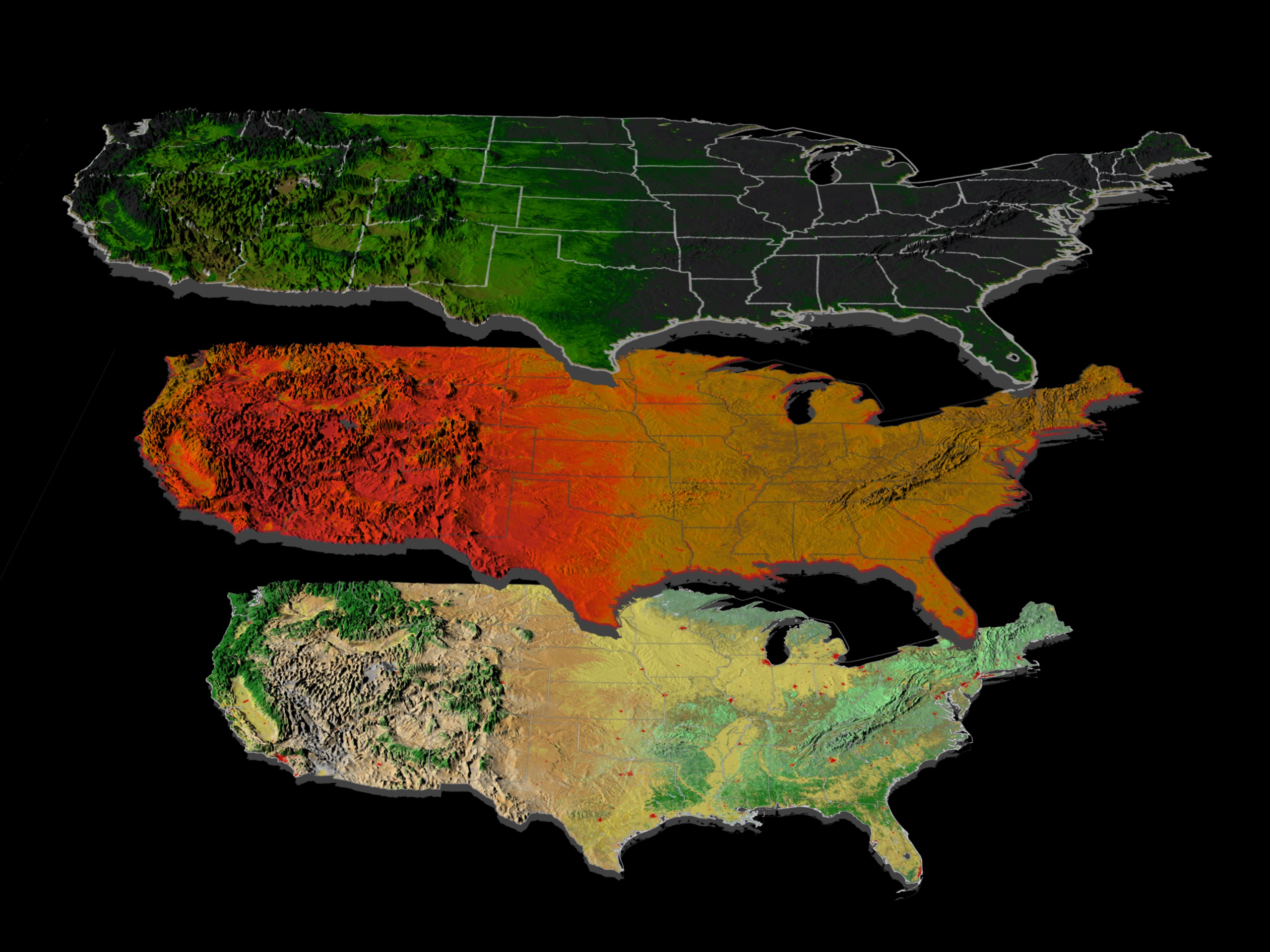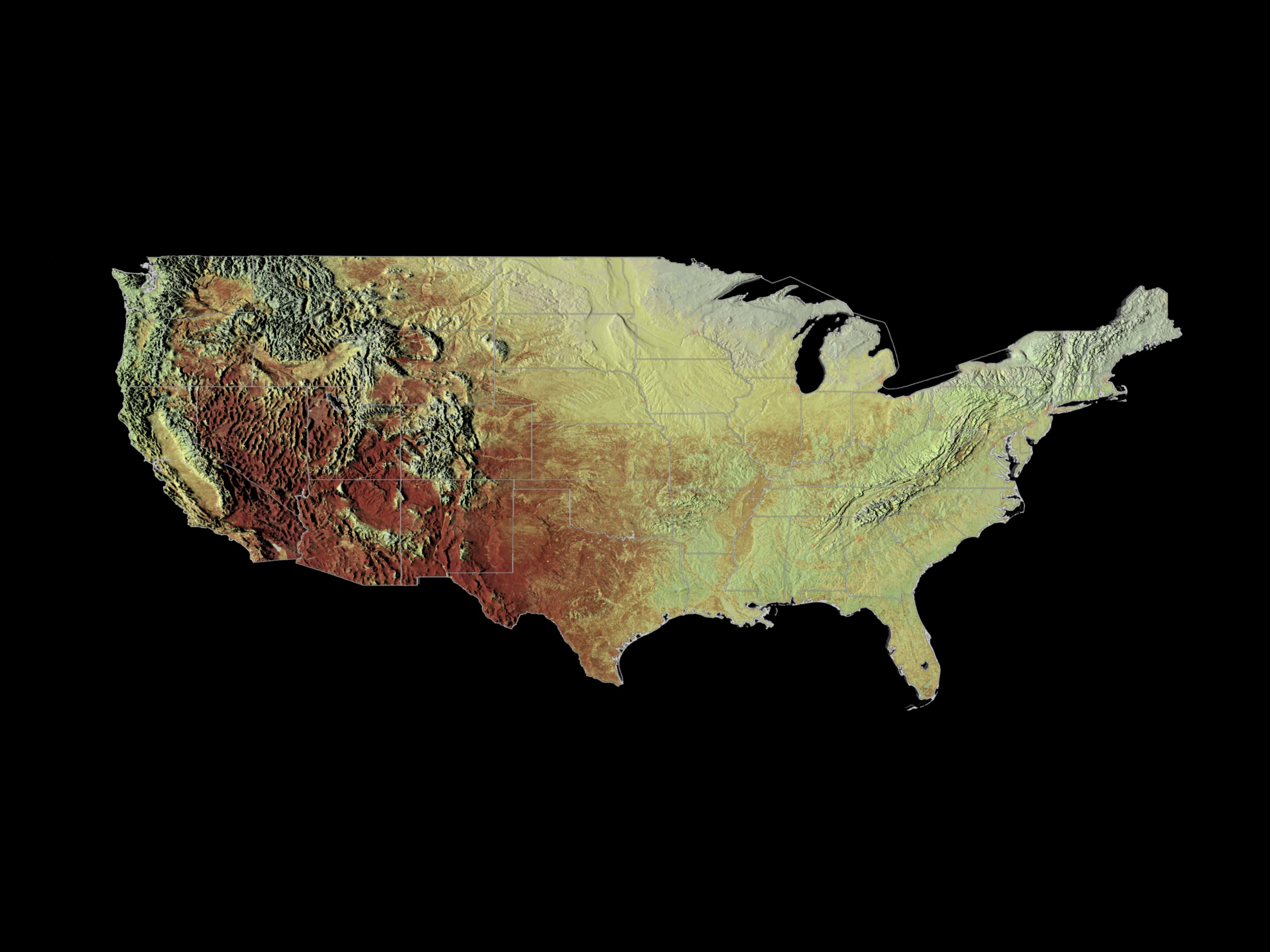Earth
ID: 3331
The spread of invasive species is one of the most daunting environmental, economic, and human-health problems facing the United States and the World today. It is one of several grand challenge environmental problems being addressed by NASA's Science Mission Directorate through a national application partnership with the US Geological Survey. NASA and USGS are working together to develop a National Invasive Species Forecasting System (ISFS) for the management and control of invasive species on Department of Interior and adjacent lands. The system provides a framework for using USGS's early detection and monitoring protocols and predictive models to process MODIS, ETM+, ASTER, and commercial remote sensing data, and create on-demand, regional-scale assessments of invasive species patterns and vulnerable habitats.



Creating the Tamarisk Habitat Suitability Map (for Science Presentations)
The first step in this process is to collect relevant satellite data which can then be used to derive a Tamarisk Habitat Suitability Map. By combining daily Normalized Differential Vegetation Index (NDVI), daily Enhanced Vegetation Index (EVI), and MODIS Land Cover Classification data the likely Tamarisk habitat suitability map can be derived.



Visualization Credits
Alex Kekesi (Global Science and Technology, Inc.): Lead Animator
Lori Perkins (NASA/GSFC): Animator
Greg Shirah (NASA/GSFC): Animator
Cindy Starr (Global Science and Technology, Inc.): Visualizer
Jeffrey Morisette (NASA/GSFC): Scientist
Jeff Pedelty (NASA/GSFC): Scientist
Lori Perkins (NASA/GSFC): Animator
Greg Shirah (NASA/GSFC): Animator
Cindy Starr (Global Science and Technology, Inc.): Visualizer
Jeffrey Morisette (NASA/GSFC): Scientist
Jeff Pedelty (NASA/GSFC): Scientist
Please give credit for this item to:
NASA/Goddard Space Flight Center Scientific Visualization Studio
NASA/Goddard Space Flight Center Scientific Visualization Studio
Short URL to share this page:
https://svs.gsfc.nasa.gov/3331
Missions:
Landsat
Terra
Data Used:
Note: While we identify the data sets used in these visualizations, we do not store any further details nor the data sets themselves on our site.
This item is part of this series:
Invasive Species Forecasting System
Keywords:
GCMD >> Earth Science >> Land Surface >> Land Use/Land Cover
GCMD >> Earth Science >> Biosphere >> Ecological Dynamics >> Invasive Species
GCMD >> Earth Science >> Biosphere >> Vegetation >> Vegetation Index
GCMD >> Earth Science >> Land Surface >> Land Use/Land Cover >> Land Use Classes
GCMD >> Location >> United States Of America
NASA Science >> Earth
GCMD keywords can be found on the Internet with the following citation: Olsen, L.M., G. Major, K. Shein, J. Scialdone, S. Ritz, T. Stevens, M. Morahan, A. Aleman, R. Vogel, S. Leicester, H. Weir, M. Meaux, S. Grebas, C.Solomon, M. Holland, T. Northcutt, R. A. Restrepo, R. Bilodeau, 2013. NASA/Global Change Master Directory (GCMD) Earth Science Keywords. Version 8.0.0.0.0
Places you might have seen this:
Kansas City InfoZine, KSL-TV (Salt Lake City), KNXV-TV (Phoenix), KUSA-TV (Denver), Richmond Times Dispatch, Space Daily, SpaceRef.com, Topix.net, WJZ-TV (Baltimore), WTVT-TV (Tampa), and Yahoo! News.
https://svs.gsfc.nasa.gov/3331
Missions:
Landsat
Terra
Data Used:
NOAA/AVHRR/EVI
1/1/2001 - 12/31/2001Aqua/MODIS
08/2005NOAA/AVHRR/NDVI
1/1/2001 - 12/31/2001Terra and Aqua/MODIS/Land Cover
1/1/2001 - 7/1/2001Tamarisk Suitability
J. Morisette, et al., includes data from NASA's Terra, Aqua, and Earth Observing-1 satellites, and the USGS Landsat satellites.
Terra/MODIS
08/2005Landsat-7/ETM+
08/2005This item is part of this series:
Invasive Species Forecasting System
Keywords:
GCMD >> Earth Science >> Land Surface >> Land Use/Land Cover
GCMD >> Earth Science >> Biosphere >> Ecological Dynamics >> Invasive Species
GCMD >> Earth Science >> Biosphere >> Vegetation >> Vegetation Index
GCMD >> Earth Science >> Land Surface >> Land Use/Land Cover >> Land Use Classes
GCMD >> Location >> United States Of America
NASA Science >> Earth
GCMD keywords can be found on the Internet with the following citation: Olsen, L.M., G. Major, K. Shein, J. Scialdone, S. Ritz, T. Stevens, M. Morahan, A. Aleman, R. Vogel, S. Leicester, H. Weir, M. Meaux, S. Grebas, C.Solomon, M. Holland, T. Northcutt, R. A. Restrepo, R. Bilodeau, 2013. NASA/Global Change Master Directory (GCMD) Earth Science Keywords. Version 8.0.0.0.0
Places you might have seen this:
Kansas City InfoZine, KSL-TV (Salt Lake City), KNXV-TV (Phoenix), KUSA-TV (Denver), Richmond Times Dispatch, Space Daily, SpaceRef.com, Topix.net, WJZ-TV (Baltimore), WTVT-TV (Tampa), and Yahoo! News.











